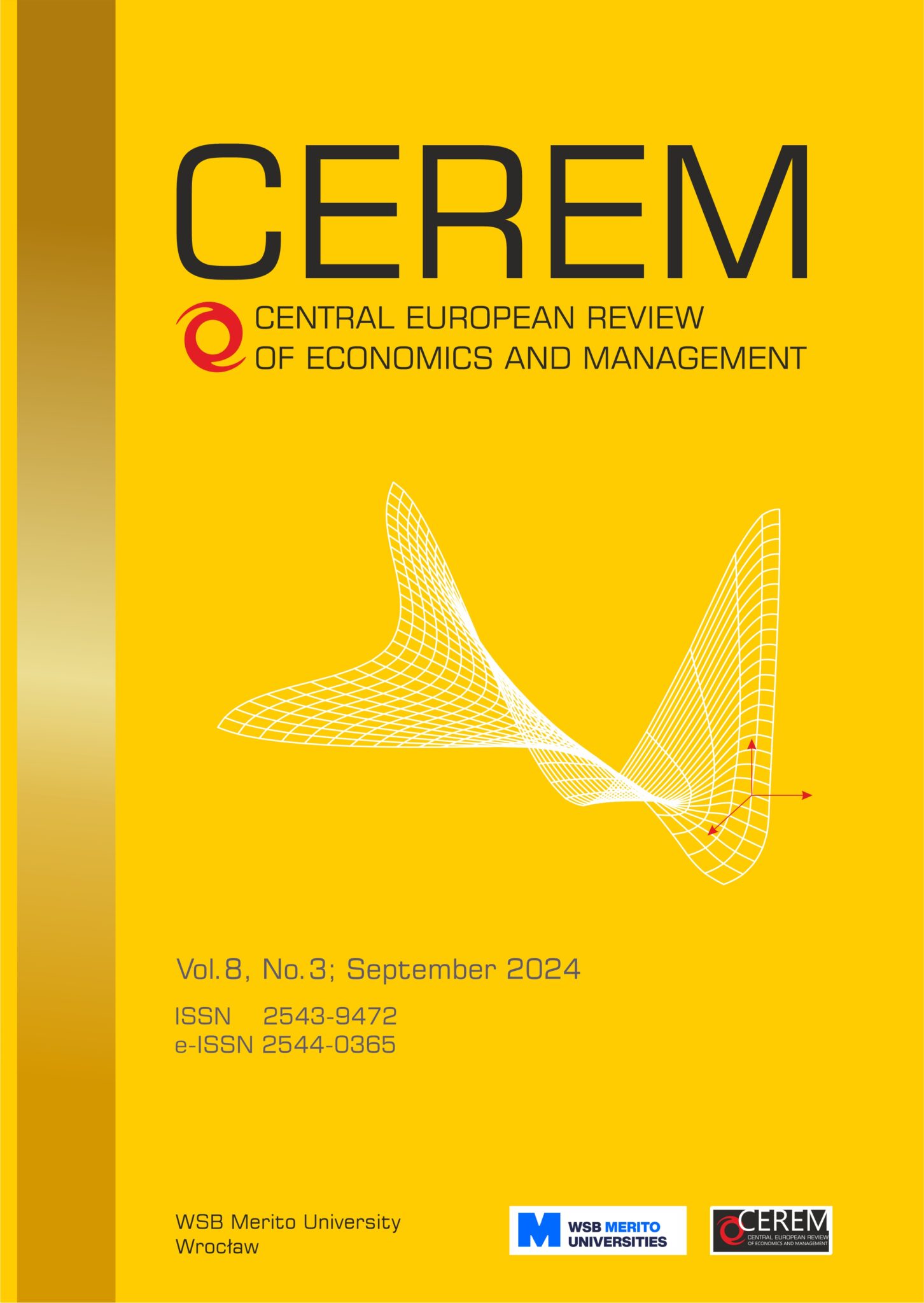Devaluation, goods price variation and trade flows
Devaluation, goods price variation and trade flows
Author(s): David Umoru, Muhammed Adamu OBOMEGHIE, Beauty IGBINOVIASubject(s): Financial Markets, Socio-Economic Research
Published by: Wyższa Szkoła Bankowa we Wrocławiu
Keywords: Devaluation; Trade Flows; Inflation Rate; Policymakers in Developing Countries; Developed Countries;
Summary/Abstract: Aim: The study evaluated the impact of devaluation and goods price variation on trade flows in a sample of 47 countries consisting of developing and developed nations from 1990 to 2023.Design/Research methods: The estimation techniques adopted in this work are the Panel Structural VAR (PSVAR), GARCH, and panel non-linear ARDL (PNARDL) methods. Unlike other traditional estimation techniques, the Panel SVAR, GARCH, and NARDL produce enhanced results. The Panel SVAR model with variance decomposition and the relevant impulse response functions were estimated to check for the interaction between variables, and also, it captures the contemporaneous effect of the changes in variables. As a result, the NARDL method was used to determine the short and long-run asymmetries. The volatility that is present in the data set was also successfully captured by Panel-GARCH/GJR-GARCH model estimation for both developing and developed countries with trade flow as the dependent variable.Conclusion/findings: The results established that both the positive and negative devaluation shocks positively but insignificantly impacted trade flows in developing countries. Goods price variability had significant positive effects on trade flows. A 1% rise in the positive shock to price variation resulted in a 0.29% rise in trade flows while a similar percentage decrease in goods price variability resulted in 0.01% rise in trade flows respectively. With the panel-GARCH results, the magnitude of the impact of devaluation on trade is near zero even though it was a positive effect. There was a convergence in the results concerning goods price variation since both the GARCH (1,1) and the GJR GARCH reported a positive impact of devaluation on trade flow. Nevertheless, we obtained a divergence in the results concerning goods price variation because, while in the GARCH (1.1), goods price variation had a positive impact on trade flow, using the GJR-GARCH, it had a negative impact. The condition of this indeterminate outcome may be attributed to the onset of globalization which has eroded some of the trade restrictions that the developing countries have used over the years to protect their infant industries. Also, while the GARCH (1,1) reported symmetric shock to trade flows, the GJR-GARCH reported asymmetric shocks. The good news is that these shocks are not permanent in developing economies. For the developed countries, the findings indicated a positive impact of devaluation on trade flow. This could be because the developed countries are mainly export-oriented as such, and a slight reduction in the exchange rate generated a significant positive impact on their trade flow. Whereas, only 34% disequilibrium error in trade flows of developing countries was corrected in the long-term period, 54% disequilibrium in trade of developed economies was restored in the long run when the destabilizing effect on trade flow occurred as a result of devaluation and price variations in developed economies.Originality/value of the article: The research contributed to the empirical literature on currency devaluation, goods price variation and trade flows between trading partners. In particular, the research established that the impact of goods price variation on trade flow was insignificant in developed economies compared to the significant effect of price variation on trade in developing nations and this was attributed to high inflation rate in these countries. There is a negative outcome for the impact of devaluation on trade flow in developing countries. There is a substantial positive nexus between exchange rate devaluation and trade flow. Perhaps, the developed countries should have planned devaluation to achieve a further improvement in their trade flow position given their strong production and industrial base.Policy implications of the research: based on the researching findings and the contributions of the study to current knowledge on the subject of currency devaluation and variation in the prices of goods and their established effects on the volume of trade in different countries, the well-managed inflation rate and exchange rate policies of the developed economies have made it almost impossible for them to experience variations in their prices of imports and exports. Policymakers in these countries are therefore advised to hold on to their current policies of non-volatility in their exchange rate as well as their inflation rates. In contrast, the monetary policy managers of the developing countries should complement policies of exchange rate devaluation with other economic enabling indices such as substantial improvement in the competitiveness of their industrial projects, a dynamic and vibrant economic environment where the inflation rate is at a very low level, as well as improvement of the level of productivity. In addition, policymakers in developing countries should ensure they implement policies that are anti-price racketeering by producers by making sure to keep their interest rates low and stable.
Journal: Central European Review of Economics and Management (CEREM)
- Issue Year: 8/2024
- Issue No: 3
- Page Range: 41-88
- Page Count: 48
- Language: English

